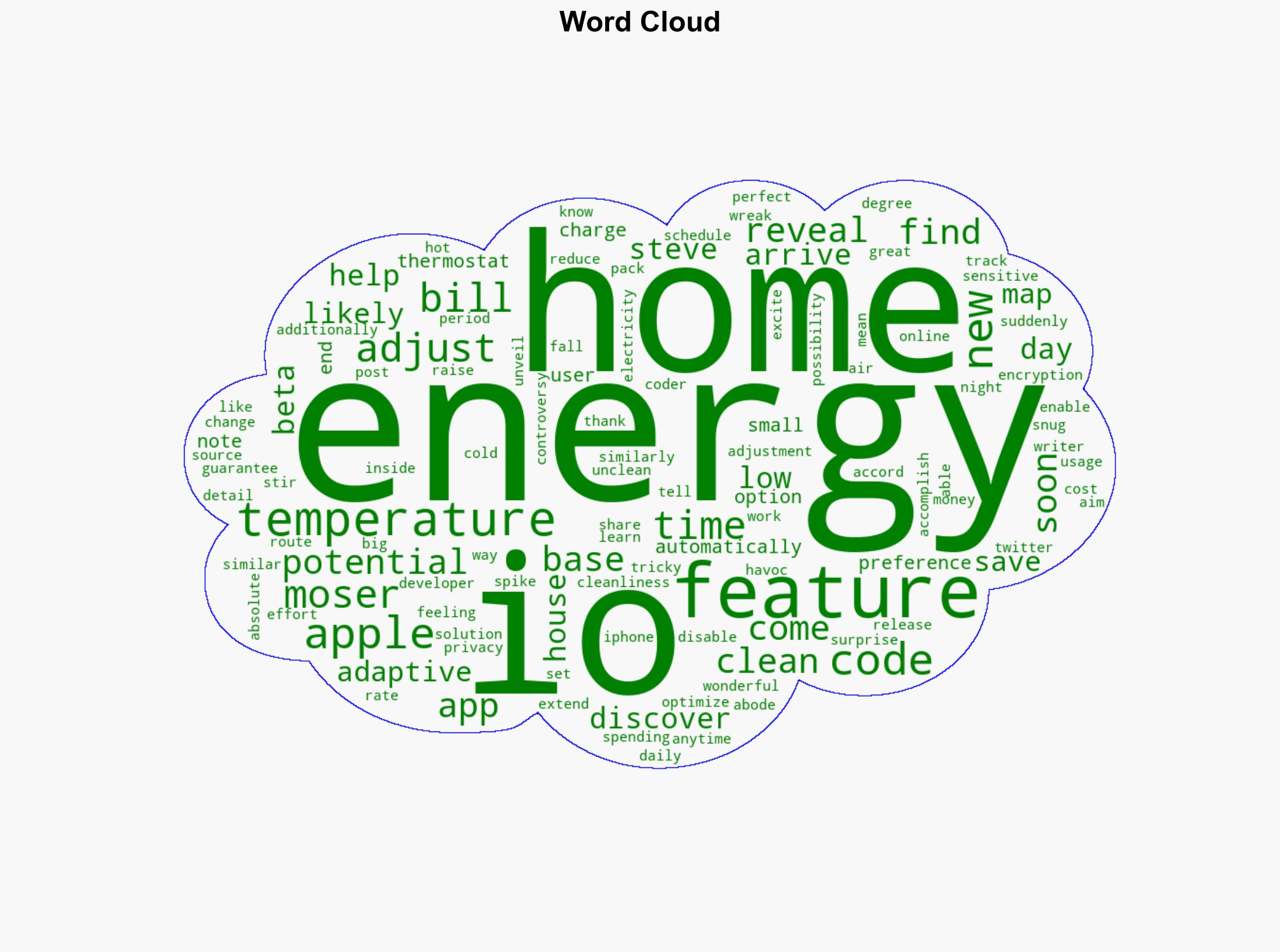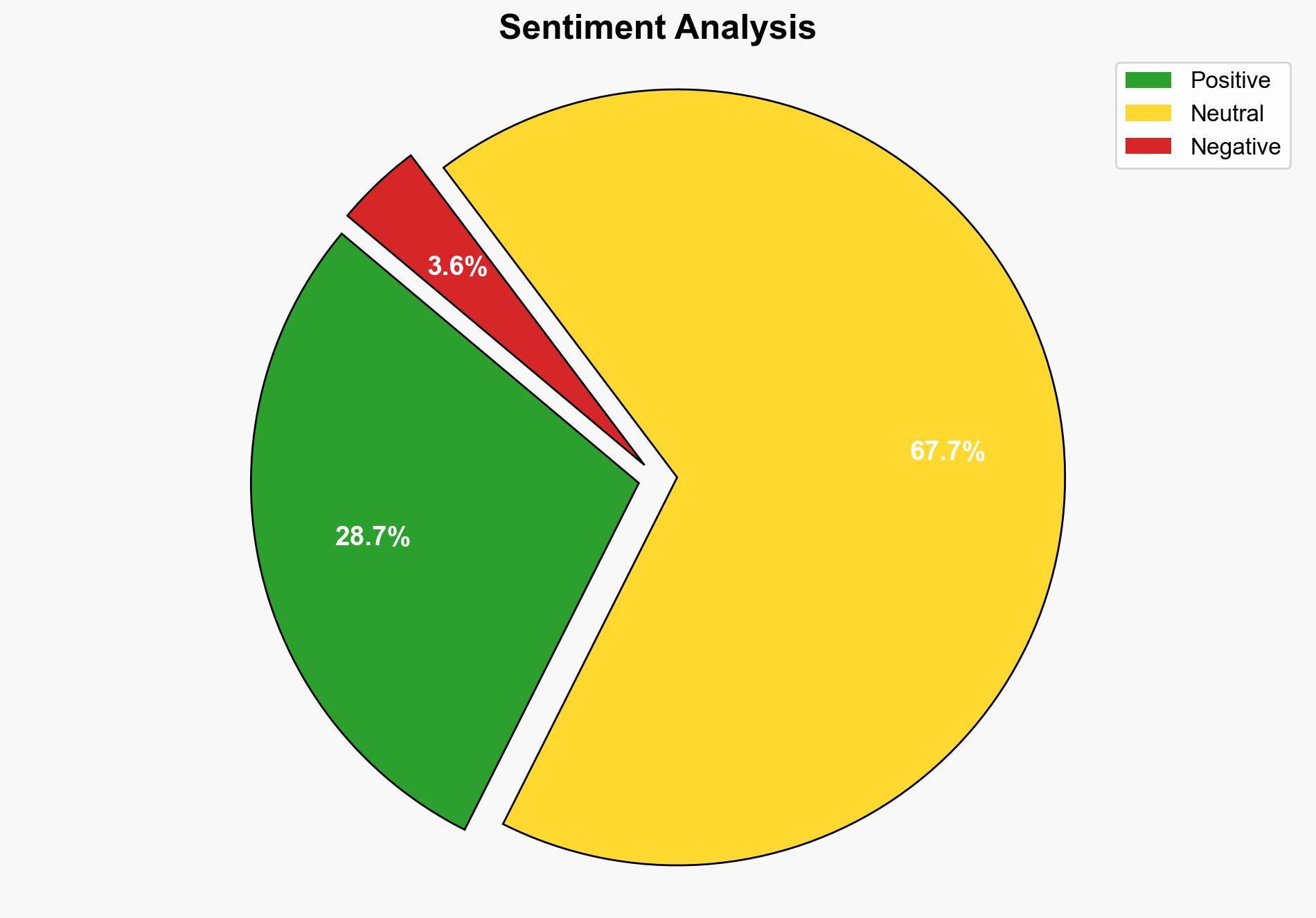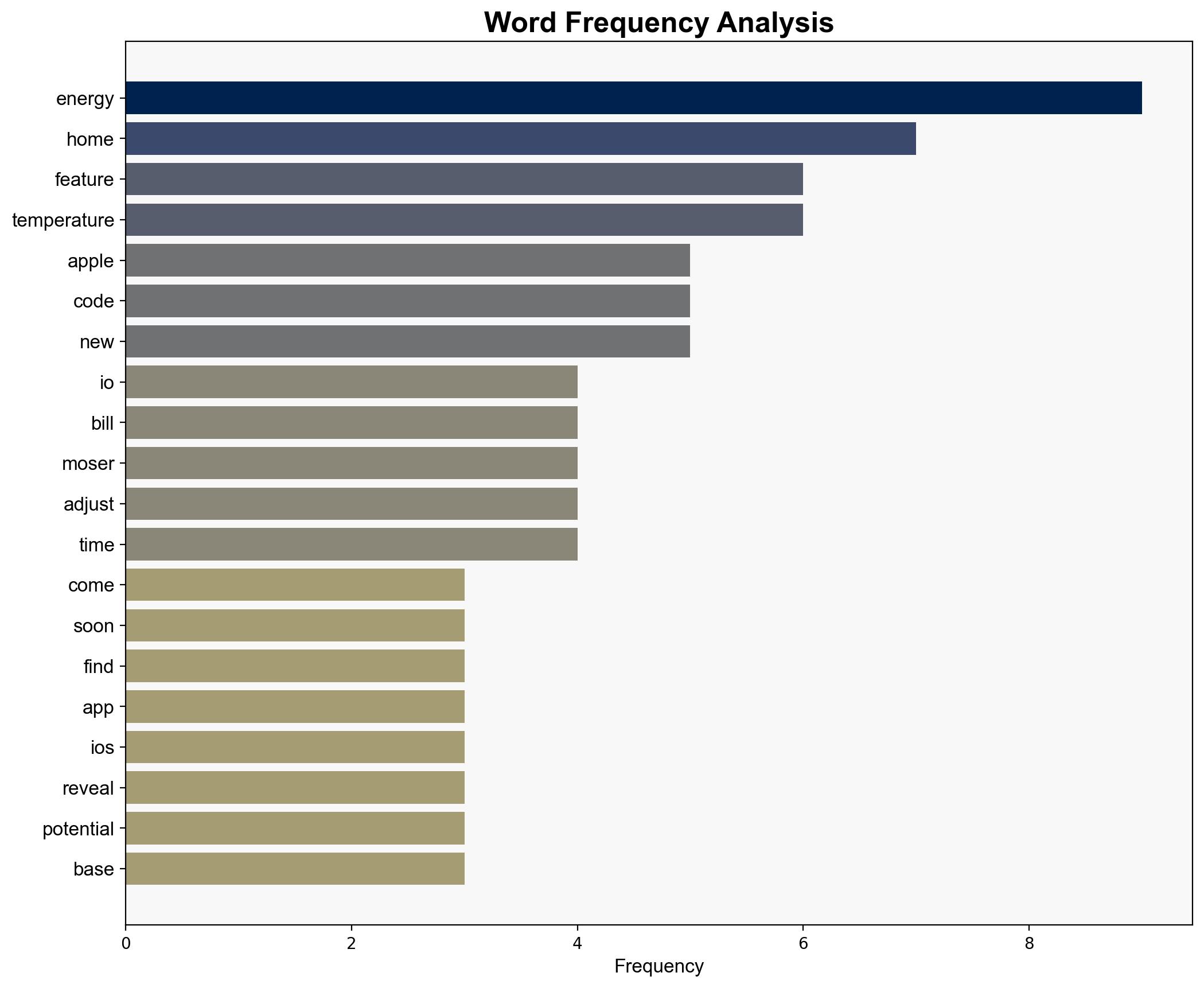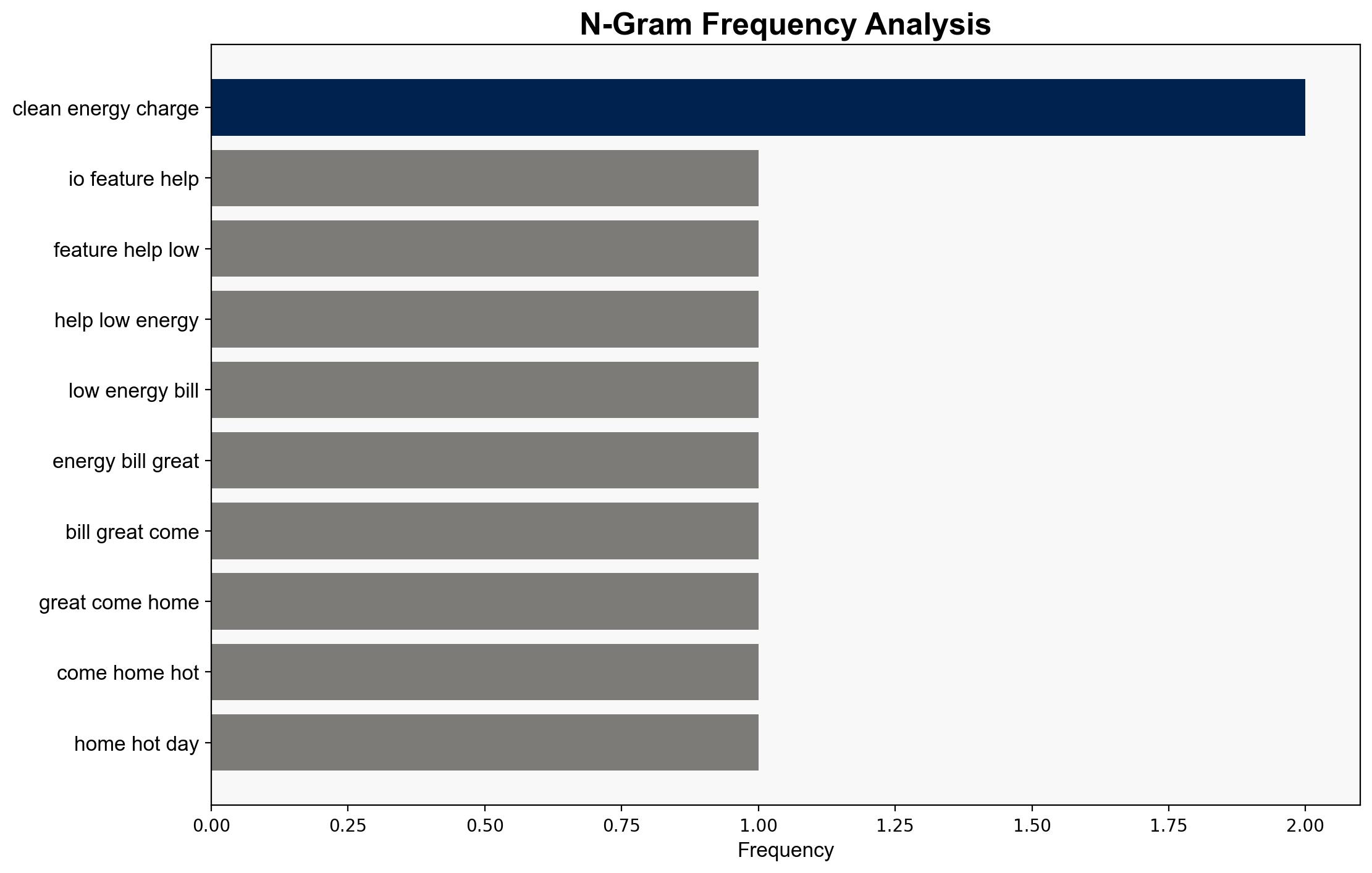This iOS 26 Feature Could Help Lower Your Energy Bill – BGR
Published on: 2025-08-17
Intelligence Report: This iOS 26 Feature Could Help Lower Your Energy Bill – BGR
1. BLUF (Bottom Line Up Front)
The introduction of an adaptive temperature feature in iOS 26 could potentially reduce energy bills by optimizing thermostat settings based on user behavior and energy cleanliness rates. The most supported hypothesis suggests that this feature will enhance energy efficiency and user privacy. Confidence level: Moderate. Recommended action: Monitor further developments and assess user adoption and feedback post-release.
2. Competing Hypotheses
Hypothesis 1: The adaptive temperature feature will effectively reduce energy bills by optimizing thermostat settings based on user behavior and energy cleanliness rates. This will lead to significant energy savings and increased user satisfaction.
Hypothesis 2: The feature will have limited impact on energy bills due to potential user resistance to automation, privacy concerns, and technical limitations in accurately predicting energy cleanliness rates.
3. Key Assumptions and Red Flags
Assumptions:
– The feature will function as intended without technical glitches.
– Users will trust and adopt the feature, allowing it to adjust their home temperatures.
– Energy cleanliness rates are accurately tracked and integrated into the system.
Red Flags:
– Lack of clarity on how energy cleanliness rates are determined and updated.
– Potential privacy concerns regarding data collection and usage patterns.
– User resistance to automated control over home temperature settings.
4. Implications and Strategic Risks
The feature could set a precedent for integrating smart home technology with energy efficiency initiatives, potentially influencing other tech companies to follow suit. However, privacy concerns and technical reliability pose risks that could lead to user backlash and regulatory scrutiny. Additionally, inaccurate energy cleanliness data could undermine the feature’s effectiveness, leading to user dissatisfaction and potential reputational damage for Apple.
5. Recommendations and Outlook
- Monitor user feedback and adoption rates post-release to gauge the feature’s effectiveness and acceptance.
- Engage with privacy advocacy groups to address potential concerns and enhance transparency.
- Scenario Projections:
- Best Case: Widespread adoption leads to significant energy savings and positions Apple as a leader in smart home energy solutions.
- Worst Case: Privacy issues and technical failures result in user backlash and regulatory challenges.
- Most Likely: Moderate adoption with mixed feedback, prompting iterative improvements and updates.
6. Key Individuals and Entities
– Steve Moser: Developer who discovered the feature in the iOS beta code.
– Apple: The company developing and potentially releasing the feature.
7. Thematic Tags
technology innovation, energy efficiency, privacy concerns, smart home technology




